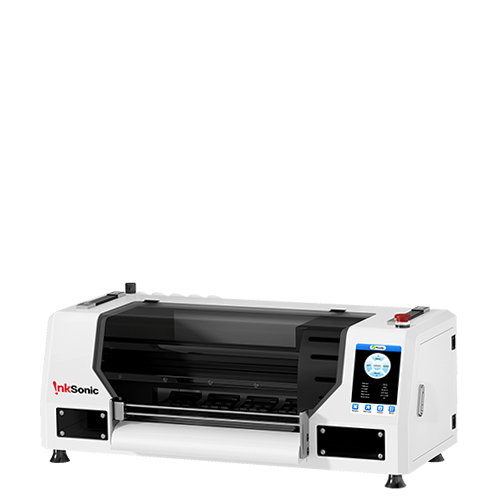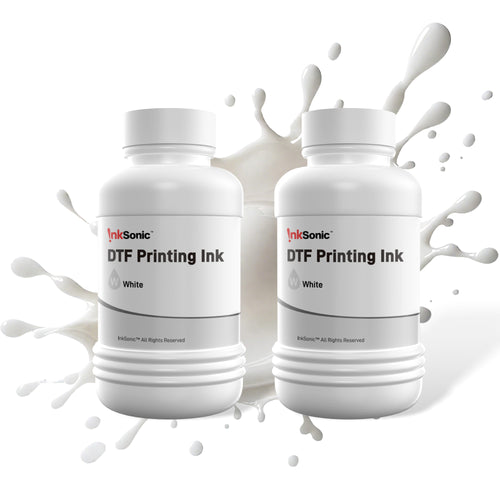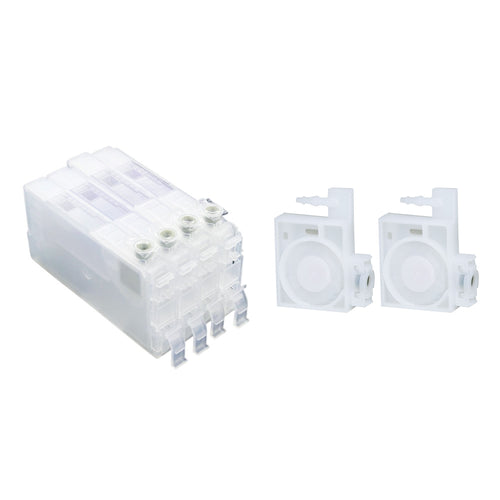DTF printing is a new technology widely used for apparel printing, home furnishing, and custom gifts. It prints the image on a special transfer film using DTF ink, which is later heat-pressed on the desired surface.
But numerous users can meet a problem where the printer makes a sudden stop while printing. This not only slows things down but also wastes materials and time. The most common reason is that the print area set in the software is too big. But actually, there are many other possible causes. In this article, we'll go over the common issues and how to fix them.
1. DTF Print Area Too Large

1.1 Your DTF Printer Has Size Limits
Every DTF printer has a maximum print area. For example, an A3 printer usually supports up to 13'' (330mm) in width, while an A4 printer supports up to 8.3'' (210mm). If your printing setting is bigger than what the printer can handle, the machine may stop, or the image could get cut off, because it simply can’t handle the file that large.
How to tell if your print size is too large:

1. Import your design into the RIP software
Make sure to leave enough safe margin around the image. Avoid pushing the design all the way to the edge.
2. Check the test print result
If part of the image gets cut off or prints outside the film area, the design size is likely too big (see example image).
3. Ink prints outside the film during actual printing
This often happens when the film isn't placed correctly. The film should be aligned closely to the right edge of the platform. Many users place it casually or leave a small gap on the side—this mistake is easy to overlook but can cause printing issues.
What you can do:
Before you start designing, double-check your printer’s specifications and ensure your file size falls within the supported range.
If you’re working with a large design, try split printing, break the image into smaller sections, print them one by one, and piece them together afterward.
2. DTF Printer Settings Problems That Stop Printing
2.1 Wrong Settings or Outdated Software
Sometimes the DTF printer stops not because of hardware, but because of software issues—like using the wrong printhead setting, incorrect ink levels, or setting the resolution too high. Bad drivers can also cause random print failures.
What you can do:
Update your printer driver and firmware to the latest version from the manufacturer’s website.
Double-check all your print settings—make sure print speed, resolution, ink setup, and media type match your printer’s specs.
Always use the software recommended by the manufacturer. Third-party apps might not work well and could cause errors.
3. Unstable Data Connection Stops DTF Printer Printing
3.1 Data Transfer Problems Between Printer and Computer
DTF printers need a steady connection to your computer. If the USB cable is loose, low quality, or the port isn’t working well, it can cause your printer to slow down, stop in the middle of printing, or restart unexpectedly.
What you can do:
Use a high-quality USB cable and make sure it's plugged in tightly.
Avoid using USB hubs or extra-long extension cables—they often cause signal loss.
Keep your computer stable while printing. Try not to open too many programs at once.
Make sure the USB port provides enough power and speed for smooth data transfer.
4. DTF Printer Hardware Errors That Stop Printing
4.1 Printhead Hits Film or Debris During Printing
If something is on the DTF printing platform—like curled transfer film, leftover scraps, or dust—the printing carriage might crash into it. When this happens, the printer will stop automatically to prevent damage.
4.2 Carriage Motor Overheats or Wears Out
If you print for long hours, the carriage motor can overheat. In older machines, the motor may wear out and stop working mid-print.
What you can do:
- Clean the platform before every print to remove debris or dust.
- Make sure the film is flat, smooth, and properly tensioned.
- If the printhead crashes often or you see motor error messages, contact technical support to check for hardware issues
5. DTF Printer Overheating Issues That Stop Printing
5.1 Printer Gets Too Hot and Shuts Down
Running your DTF printer for long periods without breaks can cause it to overheat. When the internal temperature rises too much, the printer will automatically shut down to protect its parts from damage.
What you can do:
- Give your printer regular breaks, especially after printing large or complex designs.
- Make sure the room is well-ventilated and avoid placing the printer in direct sunlight.
- Check that the fans and cooling system are working properly and clean them if needed.
6. DTF Printer Waste Ink Warnings That Stop Printing
6.1 Waste Ink Counter Hits Limit and Needs Reset
When you clean the printhead, the waste ink counter counts how much ink is used. If it reaches the limit and isn’t reset, the printer will stop working.
6.2 Other Common Errors
Low ink levels, printhead problems, or the printer not detecting the media can also cause printing to stop.
What you can do:
- Regularly reset the waste ink counter using your printer’s software.
- Pay attention to any error messages and check the manual or contact support if needed.
- Always use compatible, original ink and supplies to avoid problems.
7. DTF Printer Power Supply Problems Suddenly Stop
7.1 Unstable Power Can Make Your Printer Crash
If your power supply is unstable—like voltage drops or loose plugs—it can cause your printer to stop working or crash unexpectedly.
What you can do:
- Use a stable power source and avoid sharing the outlet with high-power devices.
- Consider using a voltage stabilizer or UPS to protect your printer from sudden power failures.
- Regularly check your power cords for damage or loose connections.
8. Conclusion: Common Reasons Why Your DTF Printer Stops
A DTF printer that suddenly stops in the middle of a job usually happens because of several combined reasons. The most common causes include:
- Print size larger than what the printer supports
- Unstable connection between the printer and the computer
- Objects or debris on the platform or carriage
- Incorrect software settings or outdated drivers
- Overheating or worn-out motors
- Waste ink counter not reset or system errors
- Power supply problems
Tips for Users:
Develop good printing habits—always check your settings before printing, keep your workspace clean and well-ventilated, use the right software and materials, and give your printer enough breaks.
If problems continue, don’t hesitate to contact your supplier’s support team for help.





































